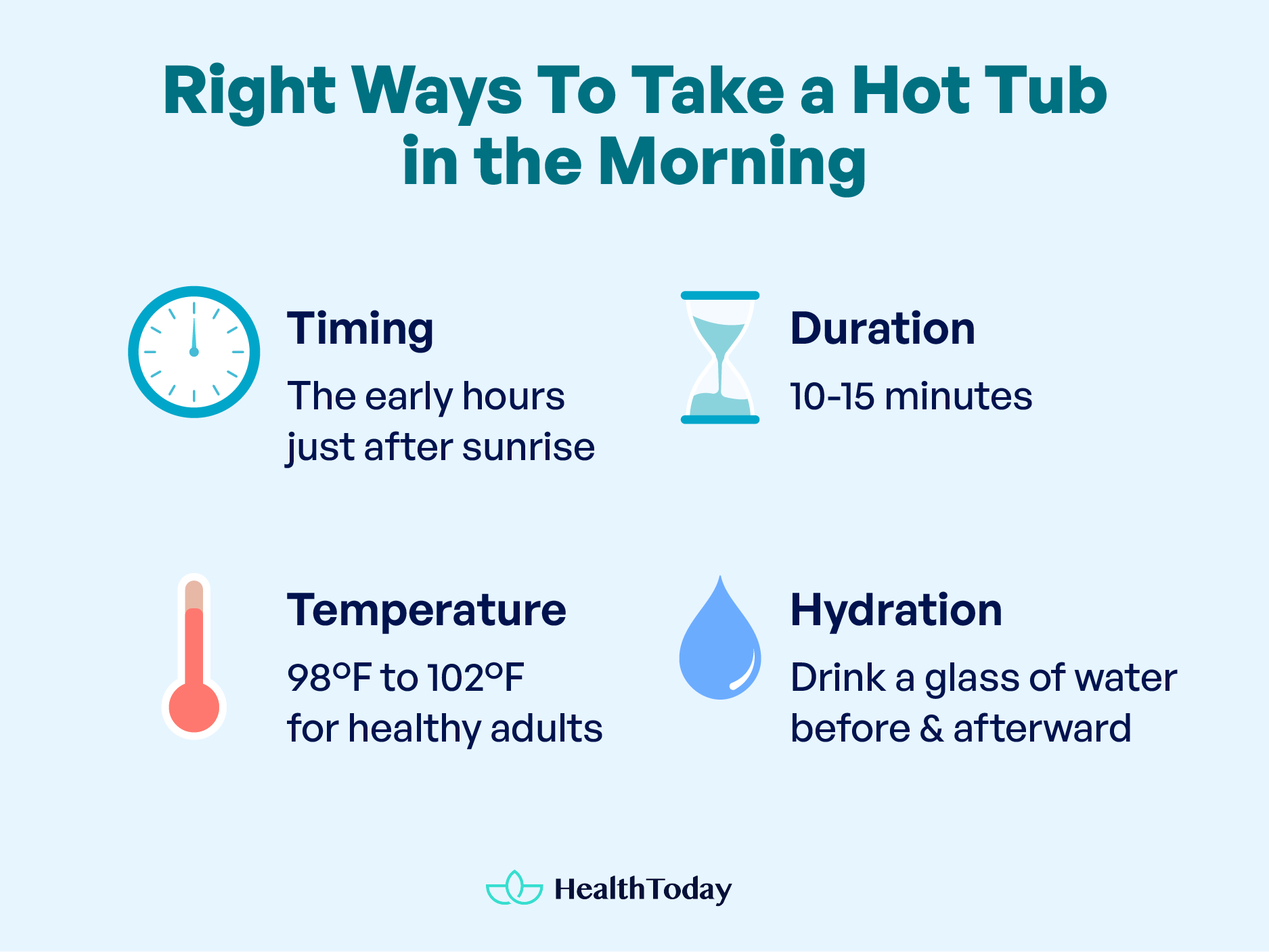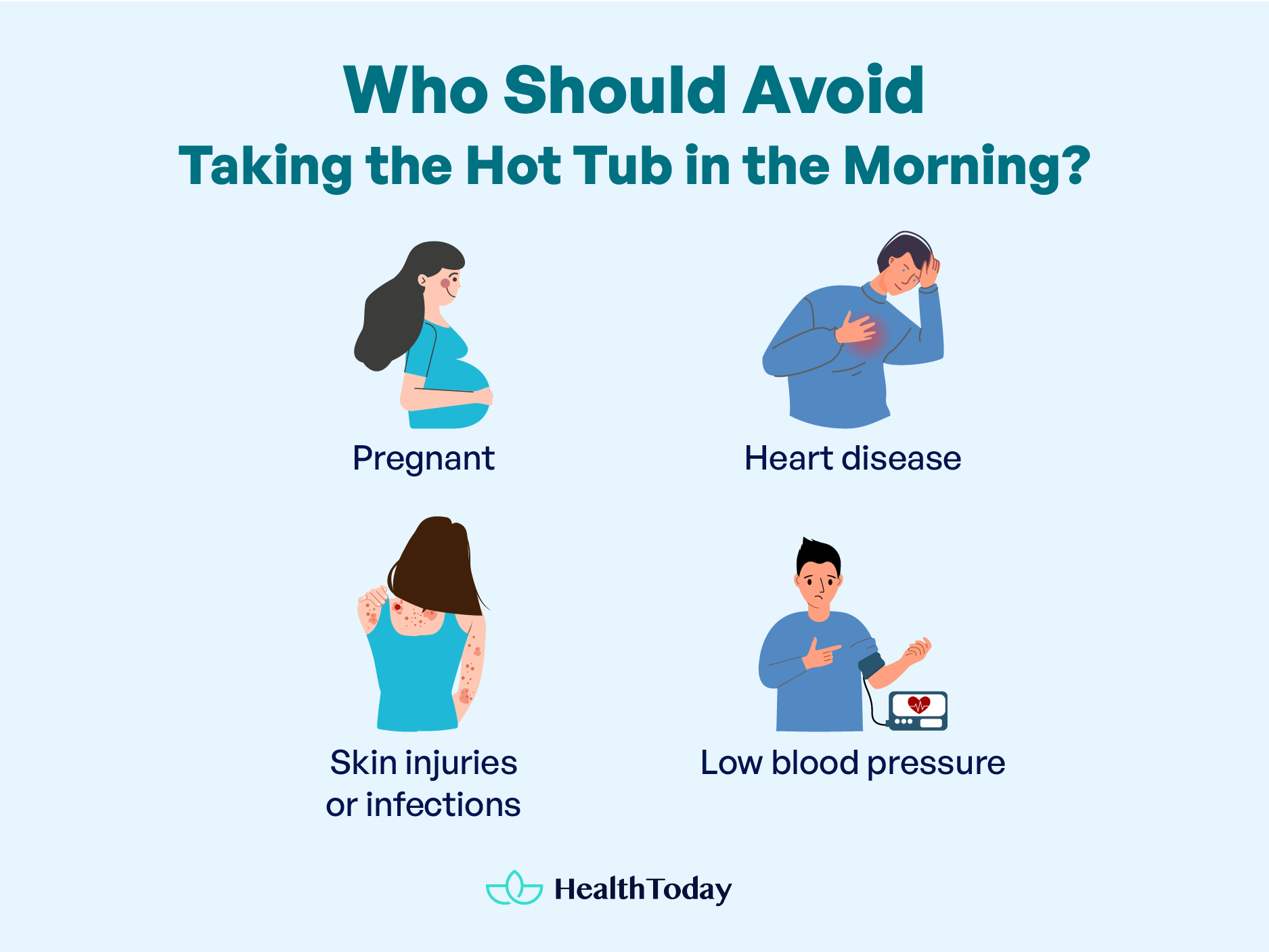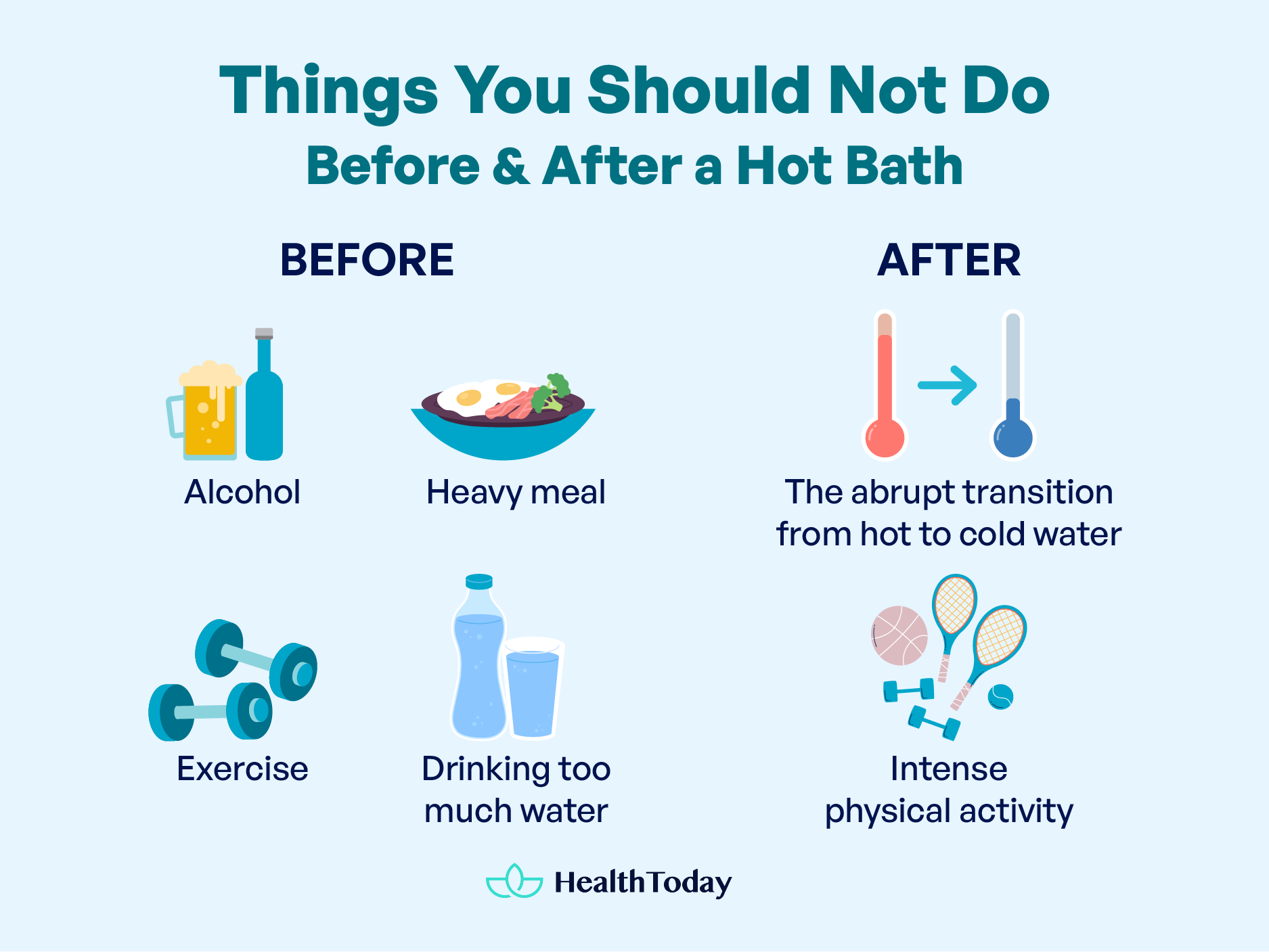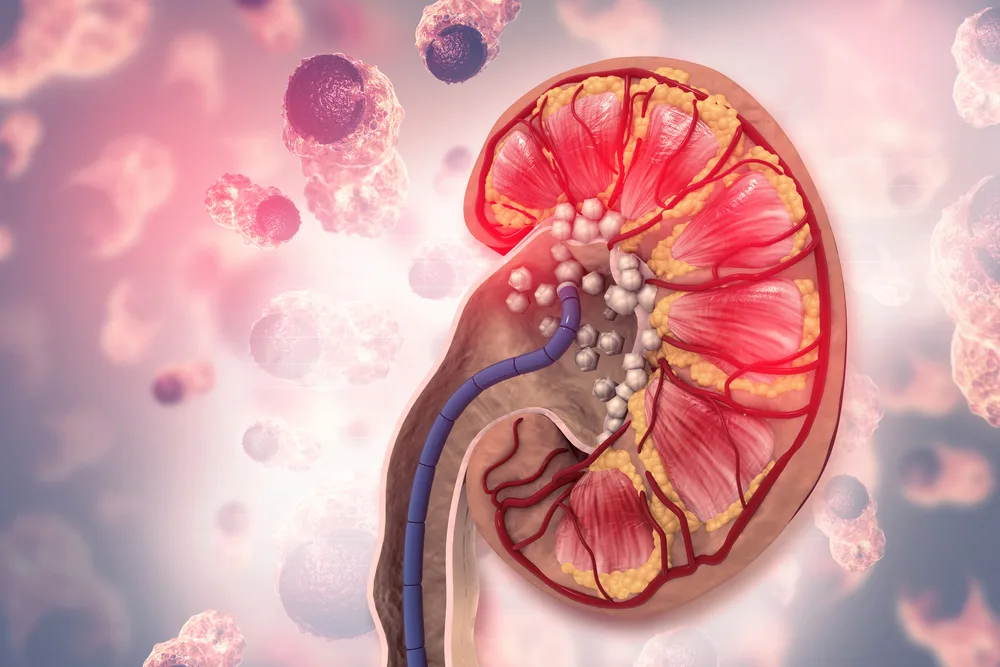Table of Contents
Imagine starting your day in the warm embrace of water, the sunrise casting a soft glow as the world awakens. The benefits of a hot tub in the morning are as rejuvenating as the morning itself, offering a sanctuary for both the body and mind. Yet, knowing who should avoid a hot tub and the right way to take a hot tub can ensure that this daily ritual contributes positively to our well-being.
Join us as we explore how to harness the full potential of your morning soak, ensuring each day begins with health, happiness, and the promise of what’s to come.
What are the benefits of a hot tub in the morning?
Hot tubs can provide several health benefits, particularly when used as part of a morning routine. Here’s a closer look at each benefit:
Stress relief and mental clarity
The heat, combined with the rhythmic pulse of water jets, works to ease the mind into a state of serenity— inducing stress-relieving benefits such as a reduction in cortisol (1).
This meditative quality promotes mental clarity, disentangling the thoughts that often clutter our early hours. Practices in stress reduction can decrease the risk of chronic stress-related health issues, bringing positivity and focus to the rest of your day.
Muscle relaxation and pain Relief
A hot tub’s embrace in the morning can be the perfect antidote to muscular discomfort.
The warm waters ease into the fabric of your muscles, untwining the knots of tension that may have settled overnight. For those who wake up with the stiffness of conditions like arthritis, studies have underscored the therapeutic effects of hydrothermal therapy (2).
It not only loosens the muscles but also mitigates the pain, enhancing one’s ability to move with greater ease and comfort. The morning thus becomes not just a start but a refresh, a physical renewal that prepares you for the day’s endeavors.
Improved circulation
The morning hot tub’s heat also acts as a catalyst for vascular dilation, a natural process where blood vessels widen and enhance the blood flow (3).
This improved circulation is not a mere fleeting benefit; it’s a boost to your body’s delivery system, ensuring that oxygen and vital nutrients are efficiently transported to where your body needs the most. The result is a feeling of invigoration, a natural energy that propels you into your day with joy and vitality. This also has an impact on cellular renewal, detox, and metabolism.
Better joint health
As you sink into the warm water, it gently supports you and eases the pain in your joints. For those who live with constant joint pain or conditions like fibromyalgia, this morning routine is a relief that can improve mobility and flexibility (4).
The water’s support allows for movements that might otherwise be painful and provides a therapeutic environment for gentle exercise and stretching. It’s a form of care that acknowledges the body’s limitations and offers a path to greater ease and ability throughout the day. This may also help reduce levels of inflammation in the body that could further contribute to joint pain, as well as a host of other chronic health conditions.
Boosts cardiovascular health
When you immerse yourself in the soothing waters of a hot tub, your heart gets a gentle workout. The warm temperatures make your blood vessels dilate, which can decrease blood pressure and increase heart rate – a beneficial, passive cardiovascular exercise.
A 2016 study in the Journal of Physiology found that passive heat therapy using hot baths can improve cardiovascular health, potentially reducing the risk of heart disease (5).
So, while you’re soaking up the peace of the morning, your heart is reaping the benefits too.
Improved insulin sensitivity
Even though it’s less mentioned, the potential to improve the metabolic health of a morning hot tub is another great health benefit.
Regular thermal therapy has been posited to improve insulin sensitivity (6). This could mean that for those managing diabetes or metabolic syndrome, a morning hot tub could be part of a comprehensive approach to maintaining balanced blood sugar levels throughout the day.
Best time and the right way to take a hot tub in the morning
The optimal time to use a hot tub in the morning is subjective and can vary based on individual schedules and preferences. However, some general guidelines can enhance the experience:

Timing
The early hours after sunrise offer a unique serenity conducive to relaxation. This period, often filled with the soft chorus of the waking world, is perfect for setting intentions and mentally preparing for the day’s tasks.
The World Health Organization, WHO suggested that interacting with water can enhance mood and overall psychological well-being, making the morning an excellent time for hot tub use (7).
Moreover, a morning soak can help transition the body from the restorative state of sleep to the active state of wakefulness with ease. Enjoying the hot tub in the morning can help in balancing circadian rhythm, which has vast implications for regulating many aspects of our health— including sleep, mood (8), microbiome, metabolism (9), and overall cellular health (10).
Duration
While soaking in a hot tub can feel endlessly enjoyable, moderation is key to reaping the maximum benefits. Sessions of 10-15 minutes are sufficient for the body to absorb the heat without causing stress to the cardiovascular system.
When the water temperature hovers around the upper recommended limit of 100-102°F, it’s important to stick to this timeframe to prevent any adverse effects such as dizziness or overheating.
Temperature
Finding the sweet spot for water temperature in your hot tub is crucial. A range of 98°F to 102°F is generally recommended for healthy adults, providing warmth without the risk of overheating. This temperature range is warm enough to relax the muscles without undue strain on the heart and circulatory system.
Hydration
Hydration is an often-overlooked aspect of hot tub use. The body can lose a significant amount of water through sweating, even if you’re not feeling it.
To counteract this, it’s advisable to drink a glass of water before entering the hot tub and to rehydrate afterward. This practice helps maintain electrolyte balance and ensures your body is replenished, enhancing the rejuvenating effects of the hot tub experience.
Who should avoid taking the hot tub in the morning?
For some, the risks of a hot tub may outweigh the benefits. Understanding who should step back from the steamy embrace of a morning soak is crucial for health and safety.

Pregnant women
Expectant mothers are advised to avoid hot tubs, particularly in the first trimester. The American Pregnancy Association warns that elevated body temperatures during early pregnancy can lead to developmental issues and increase the risk of certain birth defects (11). Hot tubs can quickly raise body temperature, which is why pregnant women should seek alternative methods of relaxation.
People with heart disease
Those living with heart conditions need to be particularly mindful. Sudden changes in heart rate and blood pressure resulting from hot tub use can be harmful to those with cardiovascular disease (12).
The heat can induce a false load on the heart, mimicking the effects of exercise, which may not be advisable for those with heart disease without prior consultation with a healthcare provider.
Those with skin injuries or infections
A hot tub’s warm and moist environment is a breeding ground for bacteria, making it a potential hazard for anyone with open sores or skin infections.
The Centers for Disease Control and Prevention (CDC) have documented instances where hot tub use has led to infections and recommend that anyone with open wounds should avoid using a hot tub until fully healed (13).
Individuals with low blood pressure
The heat from a hot tub can cause vasodilation, leading to a further drop in blood pressure for those with hypotension.
This can result in dizziness and fainting, as pointed out by Harvard Health (14). It’s recommended that individuals with naturally low blood pressure or those taking blood pressure medications speak with a healthcare provider before enjoying a hot tub.
For these groups, the morning hot tub could potentially bring more harm than relaxation. Alternatives like a warm (not hot) shower, gentle prenatal yoga, or seated exercises with the approval of a physician can offer similar benefits without the associated risks.
It’s always best to consult with a healthcare professional to find the safest way to achieve relaxation and pain relief.
Things you should not do before and right after a hot tub
Stepping into the soothing waters of a hot tub can be a delightful experience, but it’s important to approach this activity with caution. To ensure that you’re not just safe but also getting the most out of your hot tub time, there are several dos and don’ts to keep in mind.

Before a hot tub:
The moments leading up to a hot tub session can greatly influence your experience.
Consuming alcohol, for example, can dilate blood vessels and increase the risk of high blood pressure, dehydration, and dizziness when combined with the heat of the tub. Studies found that alcohol use can worsen the effects of heat due to its impact on the body’s thermoregulation (15).
Similarly, eating a heavy meal can redirect blood flow towards digestion, making you more susceptible to heat stress (16).
As for exercise, while it’s beneficial for health, doing it too close to hot tub time can elevate your core temperature excessively, posing a risk of overheating.
The balance is staying hydrated enough to compensate for the sweat you’ll lose in the hot tub without overdoing it, which could lead to nausea or discomfort.
After a hot tub:
What you do immediately after stepping out of a hot tub is just as important as what you should do before.
The abrupt transition from hot to cold water can be a shock to your system, potentially causing a spike in blood pressure and heart rate as your body reacts to the sudden change. Allow your body to acclimatize to the ambient temperature naturally.
Similarly, intense physical activity should be avoided after a hot tub session. Your muscles are relaxed, and your body is calm; strenuous activity could lead to injury or severe stress.
Lastly, a shower is advisable to remove any chemical residues from your skin and hair, as chlorine can cause dryness and irritation. It’s a simple step that can prevent skin and hair issues, ensuring that the hot tub’s benefits are not offset by avoidable discomfort.
Downsides of a hot tub
While the therapeutic caress of its waters can bring relaxation and health benefits, knowing the potential risks is important for a safe and enjoyable experience. Here are some downsides of a hot tub:
Risk of infections
The warm, bubbling waters of a hot tub can, unfortunately, serve as a playground for various microorganisms if not properly sanitized. According to the Centers for Disease Control and Prevention (CDC), hot tub folliculitis, caused by the bacteria, Pseudomonas aeruginosa, is a common repercussion of inadequately disinfected hot tubs (17). This condition is characterized by a rash or itchy spots which can develop into a bumpy red rash, with pus-filled blisters around hair follicles.
Overheating and dehydration
Submerging in the steamy waters can raise the body’s core temperature, leading to overheating. Dehydration can sneak up, as you might not realize the amount of sweat you’re losing.
Monitor the time spent in a hot tub and take frequent hydration breaks to offset the fluid loss, as dehydration can contribute to heat-related illnesses such as heat exhaustion or heat stroke.
Blood pressure fluctuations
Hot tubs can pose a risk to those with hypotension. The heat causes vasodilation, which can lower blood pressure, leading to lightheadedness or fainting.
Hot tub lung
An emerging concern linked to hot tub use is a condition known as hot tub lung, caused by inhalation of nontuberculous mycobacteria from contaminated steam.
The symptoms mimic those of respiratory infections and can lead to serious pulmonary issues if not correctly diagnosed and treated. A case report from Wisconsin brought attention to this less-known risk, underscoring the importance of proper ventilation and maintenance of hot tubs (18).
While hot tubs can be a source of relaxation and therapeutic relief, the key to reaping their benefits lies in the balance and mindful practices when using them. By keeping informed and attentive to maintenance and personal health considerations, you can enjoy the warm waters with peace of mind.
What time of day should you get in a hot tub?
The ideal time to get into a hot tub depends on your personal schedule and the purpose of the soak. Mornings can be perfect for energizing and setting a positive tone for the day, while evenings may be better for relaxation and winding down before bed. The key is to choose a time when you can unwind for 10-15 minutes undisturbed to fully enjoy the therapeutic effects of the hot tub.
Is it OK to use a hot tub every day?
Using a hot tub daily can be fine as long as you listen to your body and keep the soak to a reasonable duration and temperature. It’s important to stay hydrated and not overdo it, especially if you have health conditions that could be affected by the heat. Consistent short soaks can contribute to reduced stress and muscle relaxation.
Do hot tubs burn fat?
While hot tubs create a soothing environment that may support overall wellness, they are not a significant means of burning fat. A slight increase in heart rate and body temperature can lead to a minor calorie burn, comparable to a short walk, but it’s not enough to contribute substantially to weight loss efforts. Balanced nutrition, microbiome support, and regular exercise are key for supporting metabolic health, as is modulating stress and ensuring adequate sleep.
Are hot tubs good for your heart?
Hot tubs can have cardiovascular benefits by inducing dilation of blood vessels and increasing heart rate, which can mimic the effects of light exercise. This passive workout for the heart can be beneficial for cardiovascular health as long as it’s done in moderation and with a healthcare provider’s approval, especially if you have an existing heart condition.
Do hot tubs take your energy?
While hot tubs can be relaxing, they shouldn’t significantly deplete your energy. A morning soak can invigorate the body for the day ahead. However, it’s essential to keep the water temperature and soak duration to comfortable levels, as excessive heat and prolonged use can lead to lethargy or even overheating, especially if not properly hydrated.
Summary
Knowing the right way to take a hot tub can offer you a tranquil start to the day with multiple health benefits. However, it’s crucial to recognize who should avoid a hot tub, particularly for those with specific health conditions. Always ensure the hot tub is well-maintained, and consult a healthcare provider if there are any concerns about its use. Balancing the enjoyment of a hot tub with a mindful approach and other healthy lifestyle practices can help you reap the benefits of hot tub use.

















Comments
0